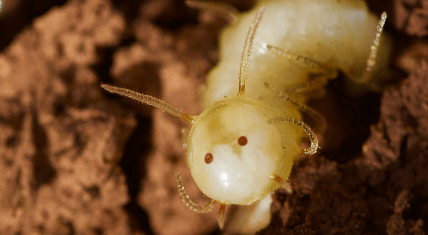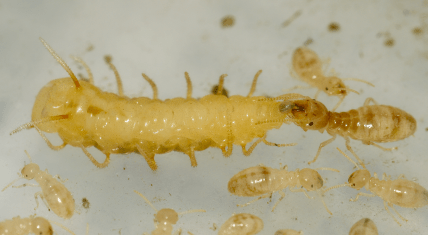In Morocco, larvae grew a mask on their backs for a specific purpose (photos, videos).
Sometimes insects change in strange ways to create more comfortable living conditions. A new study has revealed a unique case of mimicry among insects: the larvae of mountain flies have learned to disguise themselves as termites by using their rear ends as fake faces.
Researchers discovered a previously unknown species of fly larvae in the mountains of Morocco. They noted that the rear part of these larvae resembles the head of a termite, allowing them to easily infiltrate termite mounds. This protective mechanism works so effectively that termites not only do not expel the larvae but even care for them.
As is well known, soldier termites typically eliminate any unwanted guests in the colony instantly. However, Rhyncomya fly larvae have developed a series of unique adaptations. In addition to their fake faces, they also produce chemical compounds that mimic the scent of termites. The larvae also had breathing holes that served as "eyes of termites" and sensory organs that acted as termite antennae.


The scientists stumbled upon these two-faced larvae while researching ants in the Anti-Atlas mountain range. They collected the larvae along with termites and studied them in the laboratory. Unfortunately, the insects did not survive to adulthood, so it is currently impossible to determine what the adult fly of this species looks like.
This discovery opens new horizons in the study of insects and their ability to camouflage for feeding and protection within termite mounds. Researchers continue their investigations to better understand how evolution has contributed to such a unique adaptation.
Previously, "Telegraph" reported that in Florida, a rare male cougar was captured, which was larger than previously known individuals. These cougars, or Florida panthers, were nearly driven to extinction in the 1970s.